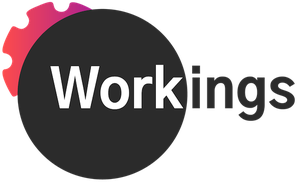Subsequently, due to the widespread embrace of remote work during the pandemic, I no longer felt the need to proselytize; I thought that even the most skeptical managers had come to agree that remote works well, not for all businesses and roles, but for many more than previously recognized. Here at Steyer, confident that cubicles were no longer required proof of being “a real company,” we gave up the small office spaces we’d had in both Seattle and the Bay Area.
Then came the RTO (Return to Office) movement, with many firms issuing mandates that most employees spend at least part of each week onsite. And in the midst of that, Steyer, like many remote companies, was used in service of an elaborate scam, wherein fake recruiters offered fake jobs to very real candidates—to procure Social Security numbers and other sensitive personal information. Our main concern during that terrible week was the wellbeing of those candidates. A secondary worry was that the scam would be perceived as yet another reason, on top of other factors driving the RTO movement, for companies like Steyer to shift away from remote work.
And so I’m back to actively making the case! Not for all companies—as I said on LinkedIn, in the office vs. hybrid vs. remote debate, I’m inclined:
1) Not to pass judgment on other firms’ policies—from the outside, it’s really hard to know what’s needed; but
2) To stay the (100% remote) course at Steyer—and to resume the work of explaining why.
Over the next few installments of Workings, which will include interviews with Steyer’s day-to-day leadership, I aim to show that:
1) There is no inherent conflict between remote work and good business results. A teaser: before the current contraction that is affecting every company in our industry, Steyer grew by a gobsmacking 30% after going totally remote.
2) The reason for this is, I think, obvious: good business results depend on having top talent, and, by and large, top talent wants remote—or extreme flexibility at the very least.
3) Our commitment to remote goes hand-in-hand with our commitment to DEI; there’s plenty of research now that shows the connection between offering remote roles and attracting a stronger, more diverse team.
4) It’s no picnic! Remote roles are demanding: managers really need to know, and be able to articulate, what success looks like, and every team member has to make an enormous effort to build relationships while delivering results. Since going 100% remote, we’ve had more turnover on our team, both because a few people we’d like to have retained have opted for something different and because we’ve had to let some people go.
I don’t know exactly where this series will wend, but as we delve into each of these points—and others that we might trip across—I’ll do my best to be frank about our experiences and lessons learned. Help keep me honest by engaging with me, especially if you have worked at Steyer or in a similar company. For privacy reasons, I can’t discuss any individual’s engagement with Steyer in a group setting (i.e. this newsletter, LinkedIn, or Slack) but I’m always reachable via email (kwalton@steyer.net) for one-on-ones.
Thanks for reading,
Kate
Photo by Chris Montgomery on Unsplash


 Hello from Steyer!
Hello from Steyer!